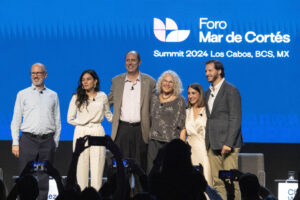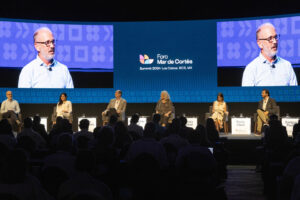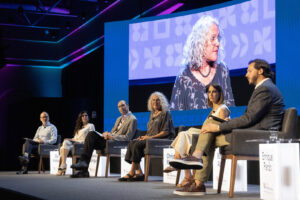Los Cabos, BCS. _ A few months ago, in the middle of the year, Christy Walton a roundtrip through the country and Gulf of Californiafrom La Paz to Los Angeles Bay.
On the journey of approximately 430 miles he expected to see the crystal-clear sea, because his 60 years of experience of knowing the "Aquarium of the World" But what he found was a green, cloudy sea, with lots of jellyfish and small fish, indicative of a degraded sea.
The entrepreneur and philanthropist, founder of Alumbra InnovationsOn their trip they observed fishermen catching small fish, and on the way back they stopped near Salsipuedesa small island, where they noted the presence of pangas de Kino Bay.
"The divers, four per panga, took everything and there was a boat anchored. They said they are staying a few days and taking everything that needs to be taken. While we were there, having lunch just anchored, taking a break in our trip, a big boat from San Felipe arrived towing 8 pangas. And this is a commercial tourist fishing boat. They put four men on each of those eight pangas and lined up along the reef and fished as much as they could. It's a disaster," he lamented.
He recounted this experience during his participation in the Sea of Life Panel: Steps Toward Regeneration and Prosperity in the Gulf of Californiain the Summit 2024 Cities with a Future. No fear of action.
"I started asking myself, 'Why is this sea green?' I know we have sewage and toxic waste problems in Tijuana, and that Ensenada is draining its sewage directly into the sea, but I hadn't really thought about the interior of the Gulf. There is not a single city or town in the entire Gulf, except maybe San Felipe, that deals with its sewage. We are destroying what we live in and what we live for," he lamented.
It is worth trying to measure the Gulf's health: Halpern
After listening to Christy Walton's experience, Ben HalpernDirector of the National Center for Ecological Analysis and Synthesis (NCEAS), commented that there are many things that are affecting the Gulf of Californiaso it's worth trying to measure your health with a tool called Ocean Health Index.
"To support a truly healthy Gulf of California, we need not only the natural, healthy, thriving system, but also the people and their healthy, thriving communities, because if they're not doing well, they're not going to have the interest or the capacity or the ability to take care of the ocean they live next to," he said.
The Ocean Health Indexis in its initial phase and in 2 years it will yield data, he explained. It will measure and provide information that will indicate how healthy the sea is.
"As we develop over the next two years here, we will work with communities, stakeholders and businesses, to understand what are the things that people value and need from the Gulf of California, like the food from fishing and aquaculture; like the tours and recreation; like the cultural values that people get from visiting their favorite part, from the jobs, livelihoods and economies that are fueled by coastal use," he said.
Halpern stressed that all these different pieces will be combined in the index and this will allow for follow-up to eventually change the things that are not being done well.
"It's a tool, but it's also a process, because it's engaging people on the other side of the gulf. And it's a strategic plan of how we can move forward with better management and hopefully investment and commitment to the Gulf of California," he said.
The panel also included Christopher TealConsul General of the United States in Tijuana; Tania Rodriguezof Co_Platform; and Rocío Abud MirabentDirector of the Coppel Foundation and Social Responsibility of Grupo Coppel.

Teal explained the binational efforts being made by Mexico and the United States to address the wastewater problem of the Tijuana riverand water management of the Colorado River.
Rodriguez commented on investment in biodiversity conservation, regenerative agriculture, education and community resilience projects, while Abud highlighted the work that the Coppel Foundation is doing in El ManglitoLa Paz, and The ReformSinaloa, Sinaloa, to generate thriving communities and healthy ecosystems.








